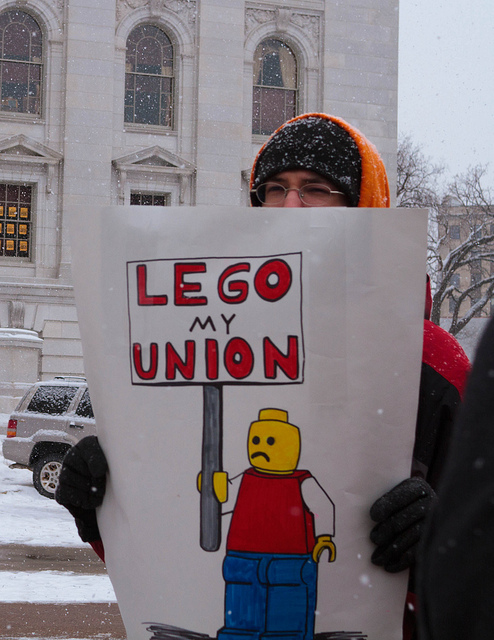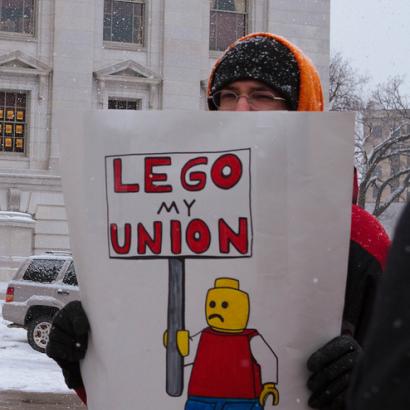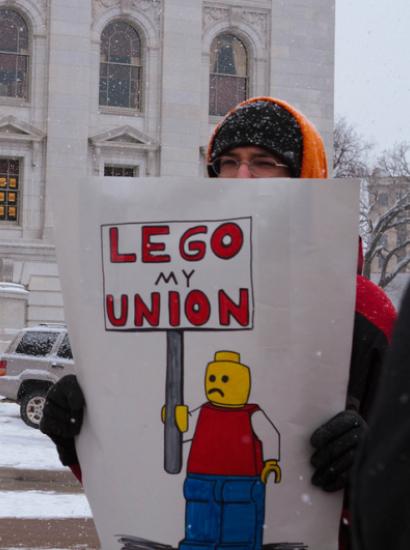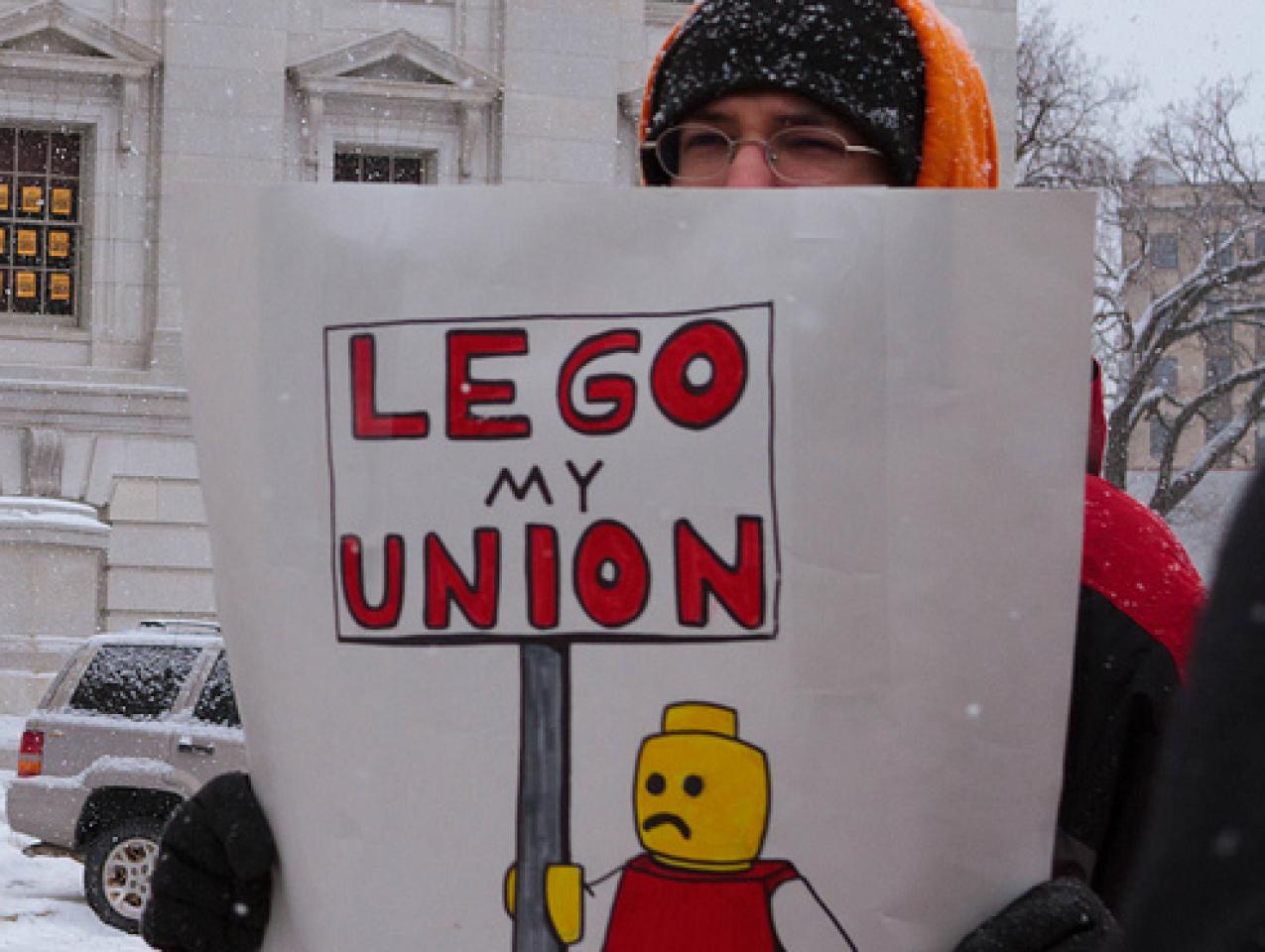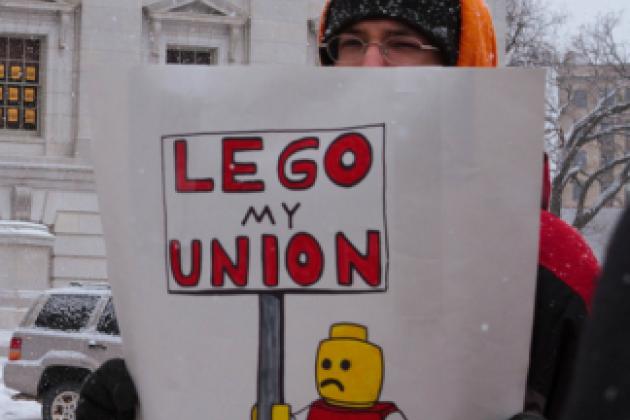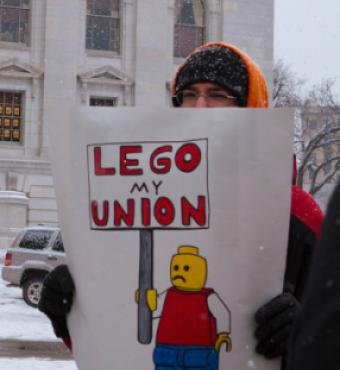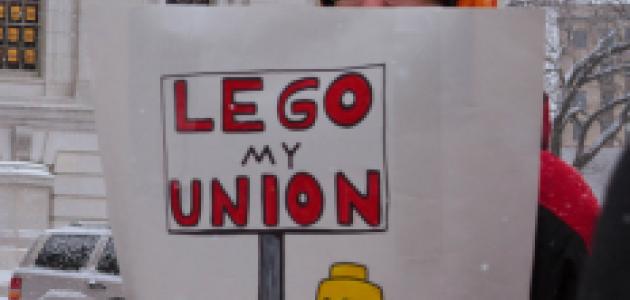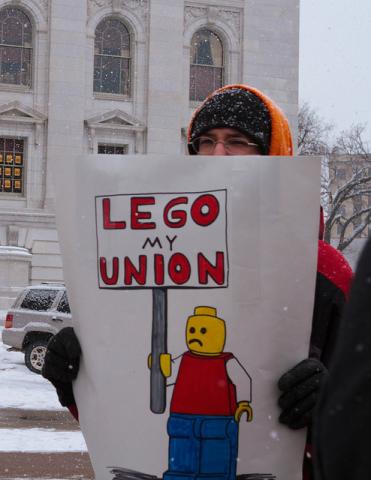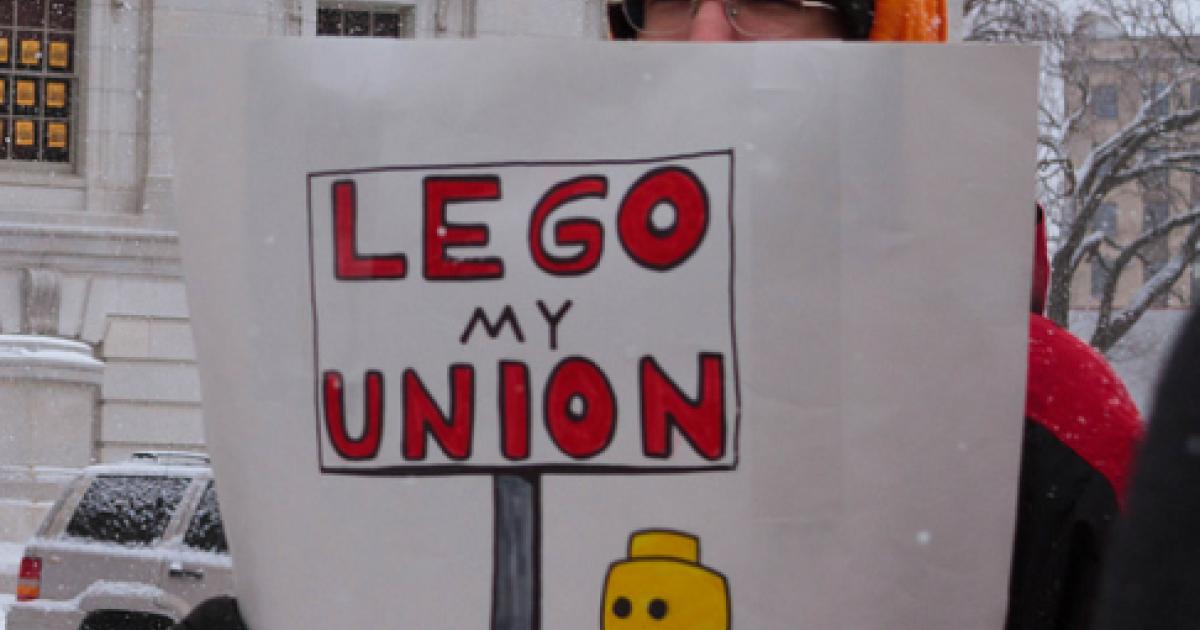- Politics, Institutions, and Public Opinion
On Monday, January 11, the United States Supreme Court will address in Friedrichs v. California Teachers Association two long-standing issues about the status of public unions that have vexed the Court for at least 60 years.
The first of these questions asks whether the Court’s 1977 decision in Abood v. Detroit Board of Education should be overruled. That case allows for so-called “agency shop agreements,” under which a union is entitled to collect from nonmembers fees that cover the cost of its collective bargaining expenses with the government employer, but not those expenses that are said to be properly chargeable to the political activities of the union.
The oft-stated rationale behind Abood, which has been affirmed on multiple occasions, is that the union should be allowed to collect the first set of expenses in order to make sure that non-union members do not “free ride” on the union’s efforts to improve their working conditions for all members of the bargaining unit. Thus in Lehnert v. Ferris Faculty Association, conservative stalwart Justice Antonin Scalia defended the union case as follows: “Mandatory dues allow the cost of [the union’s bargaining] to be fairly distributed; they compensate the union for benefits which ‘necessarily’—that is, by law—accrue to the nonmembers.”
Under the conventional wisdom, moreover, that union power is offset by the so-called duty of fair-representation under which a union, as the exclusive bargaining agent for workers within a defined bargaining unit, must also protect the dissident workers from whom it collects dues. But that quid pro quo logic, Abood holds, does not apply to general political efforts of unions to change the background law and attitudes. To force dissident workers to contribute to these efforts is to require a form of compulsory speech that is blocked by the First Amendment guarantee of freedom of speech.
The second-tier issue in Friedrichs is more technical but also vital. Right now, the law puts the burden on individual workers who disagree with the union’s political activities to opt out on an annual basis. The petitioners in Friedrich want that burden to be reversed so that the union has, again on an annual basis, to persuade individual members to opt in—that is, to contribute dues. The power of inertia is enormous, as it is always costly to persuade people to move away from any baseline that has been set by legislation. Indeed, we know both from the operation of the right-to-work laws and forms of collective bargaining, such as Wisconsin Act 10, that union membership and union behavior are heavily affected by any changes in the overall structure of collective bargaining laws. The vast attention given to Friedrichs reflects the fact that it is a very important case. However it is decided, it will have a huge impact on the future development of American labor law.
There is no question that Abood has been under siege since the Court’s 2012 decision in Knox v. Service Employees International Union, dealing with highly technical issues, which made it clear that many of the conservative members of the court were unhappy with the continued application of Abood in the context of public unions. In figuring out how the Court should respond in Friedrichs, everything turns on the starting point of the analysis. The defenders of the National Labor Relationship Act start by treating collective bargaining as the highest social good and thus work against narrowing any exceptions to its scope. Most of the modern attacks on the law take as given the constitutionality of collective bargaining statutes and then argue that what matters today is not the low level of protection that is afforded to economic liberties, but the far higher level of scrutiny that necessarily attaches to First Amendment claims.
But why start there? The threshold question is: Does it make any sense to allow for exclusive collective bargaining under the auspices of the National Labor Relations Board? To answer that question, it is useful to examine the free-rider assumption that lies at the core of the Abood synthesis that is now under attack. The basic argument of union leaders is that a rising tide raises all ships and does so equally. To union supporters, the ability of workers to engage under Section 7 of the NLRA in “concerted activities for the purpose of collective bargaining or other mutual aid or protection” is an unassailable premise of the modern law.
Unfortunately, that rosy vision is incorrect for two reasons. The first deals with successful unions, namely, those whose concerted activity raises wages and lowers overall consumer welfare. Historically, the dangers of successful union activity were well understood. Thus in the great 1908 case of Loewe v. Lawlor, commonly known as the Danbury Hatter’s Case, a unanimous Supreme Court held that secondary boycotts, i.e. those against firms that did business with any firm that a union wished to organize, were per se illegal contracts in restraint of trade under the 1890 Sherman Act. Progressive politics overturned this by statute in Section Six of the 1914 Clayton Act, which announced that “the labor of a human being is not a commodity or article of commerce.”
But it is not as though the legislation prohibited all contracts. Quite the opposite, it exempted unions from the antitrust law. But to this day, its defenders have not explained why concerted union action is any better than concerted actions by business. Successful union activity should be subject to the same scrutiny as any other horizontal agreement when challenged as a contract in restraint of trade.
A key assumption of modern labor laws relates to the supposed internal cohesion of union membership. Thus the free-rider argument takes as its implicit premise that union workers are not heterogeneous in their preferences, but in fact share the same views on all negotiating issues. Given that strong, but wrong, assumption, the free rider argument makes sense. The union that is attentive to the preferences of its members is necessarily equally attentive to the “identical” preferences of its nonmembers as well. On this stout assumption, the union can only survive if nonmembers are made to bear their fair share of the collective costs. Otherwise workers face a giant prisoner’s dilemma game where everyone loses the benefits of collective action because no one is willing to bear his or her fair share of the cost. (Just this public goods argument motivated Mancur Olson’s immensely influential 1965 book, The Logic of Collective Action, which explains forcefully why taxation is necessary to provide standard public goods like law and order.)
But the argument becomes much more difficult to sustain whenever preferences are not homogeneous. Thus, it is easy to explain why every society enforces prohibitions against murder, but far more difficult to explain whether they should intervene in foreign wars whose merits are subject to intense differences in public opinion. We have to tolerate a collective response to that issue, because the United States can pursue only one foreign policy. But in the labor context, where the same heterogeneity of preferences is evident, there is no need for appointing any union the exclusive representative of all the workers. Union selection takes place through bitterly contested elections. Sometimes, a majority of workers favor unionization, but differ on their choice of two competitive unions. In other situations, many workers may deeply oppose union representation precisely because they believe it will make them worse off.
Looking at the duty of fair representation, which was so critical to the Abood synthesis, brings this point home. The duty was created by the 1944 Supreme Court’s decision in Steele v. Louisville & Nashville Railroad. Why? Because Steele involved racial injustice that occurred once the leadership of a majority-white union, organized under the collective bargaining provisions of the 1926 Railway Labor Act, got some 21 railroads to amend their collective bargaining agreements to exclude black firemen from their traditional jobs. Chief Justice Stone refused to let that action go unchallenged, and by judicial fiat imposed on union leaders a much needed duty to represent their minority workers fairly.
Steele teaches us two important lessons. First, it is a lot easier to announce a duty of fair representation than it is to implement it. Some thirteen years later, the black firemen were back in the Supreme Court again in Conley v. Gibson still seeking fair representation. The blunt truth is that these black firemen were far better off when represented by their black leadership in their traditional all-black union, so great were the conflicts when they were integrated into the other union.
Second, most disputes are not touched by Steele because they have no racial overtones. Thus shortly after the passage of the NLRA, a major conflict emerged between the American Federation of Labor, which favored craft unions, and the newly minted Congress of Industrial Organizations, which wanted negotiations to take place on a plant-wide basis. This protracted conflict was over the distribution of the gains from unionization. Craft unions could hold out for higher wages for their specialties that could be transferred to the large number of unskilled or lesser skilled workers in any plant wide setting. Different voting arrangements led to different outcomes.
The duty of fair representation places no effective constraints on how unions and employers divvy up the benefits among different groups of covered workers. Indeed one of the reasons why unions in the private sector have fared so badly is that they cannot easily overcome these problems. Within the public sector, the dynamic is usually different because state law often guarantees unions their representative status without having to persuade individual teachers to work for them. At this point, the choices left to antiunion teachers are sharply limited when they cannot just opt out. Some of these teachers may wish to free ride on union efforts.
But others do not, for they correctly perceive that they are worse off with union representation. Thus excellent teachers often favor merit raises. They oppose seniority preferences that tie wages and job protection to years of service. They bridle under rules that give weak or incompetent teachers outsized protection against dismissal. Yet these unhappy teachers cannot quit because they know that all other public school systems are burdened with similar rules. It is therefore perfectly sensible for them to prefer no union at all to one that gives them union representation free of charge.
This simple point undermines Abood, insofar as the case rests on the supposed common interests of all workers. As a matter of first principle, unions are the source of two evils: unified, they wreak harm on public services; divided, they offer shabby treatment to their dissident members. In an ideal world, the Supreme Court would use Friedrichs to dismantle mandatory collective bargaining root and branch. But short of that, what the Court should do, and do unanimously, is set dissenting workers free from union domination by striking down all agency shop provisions.







